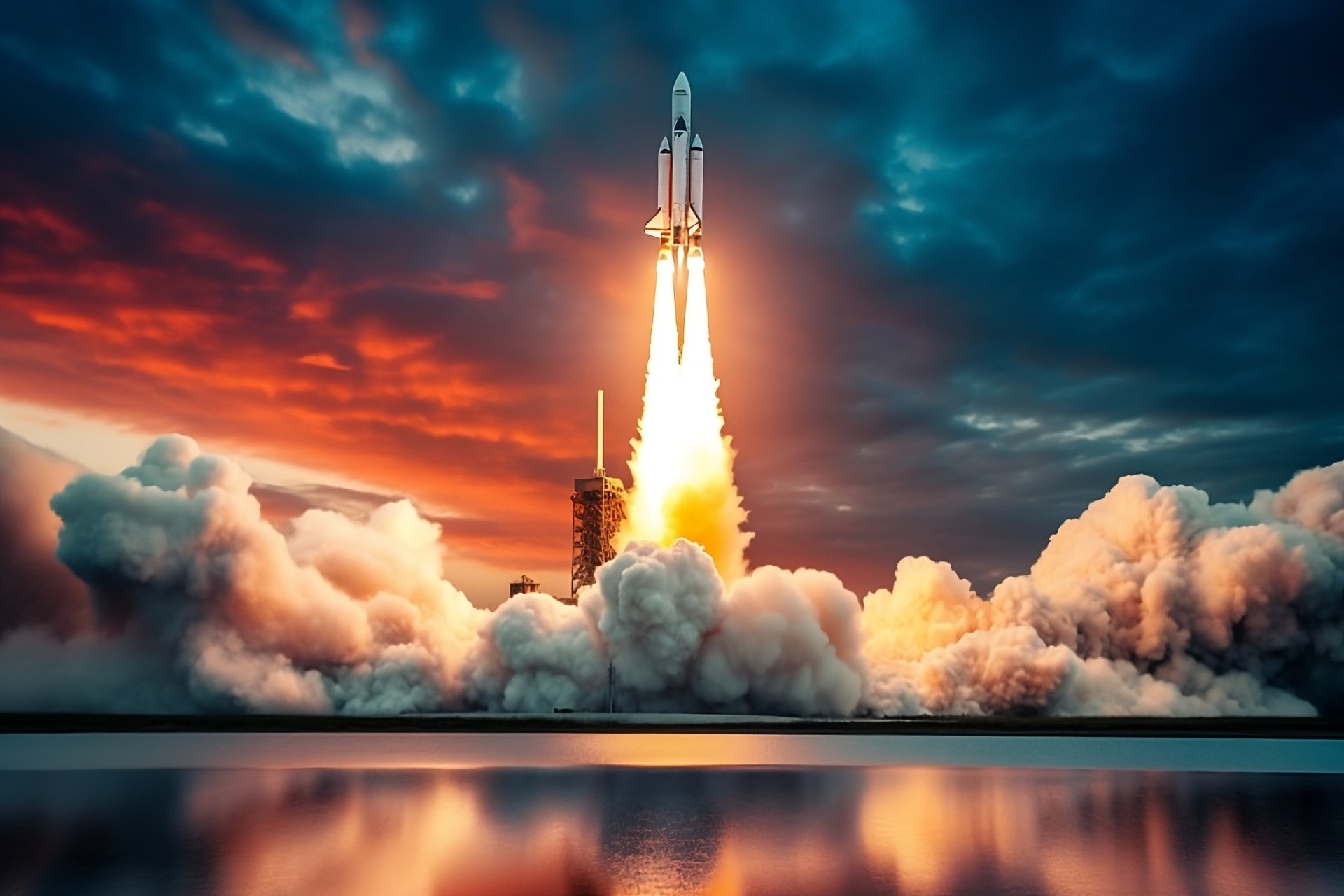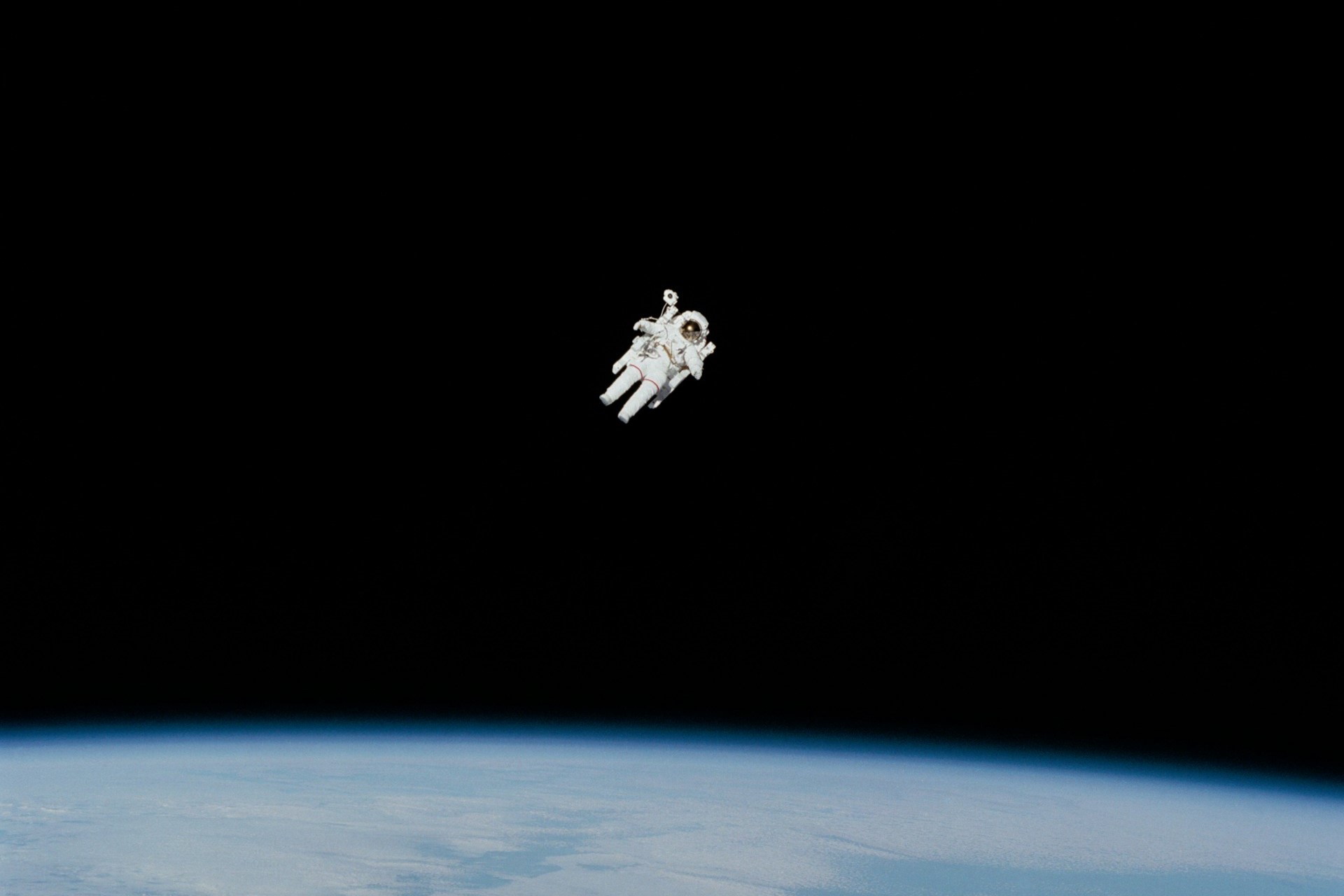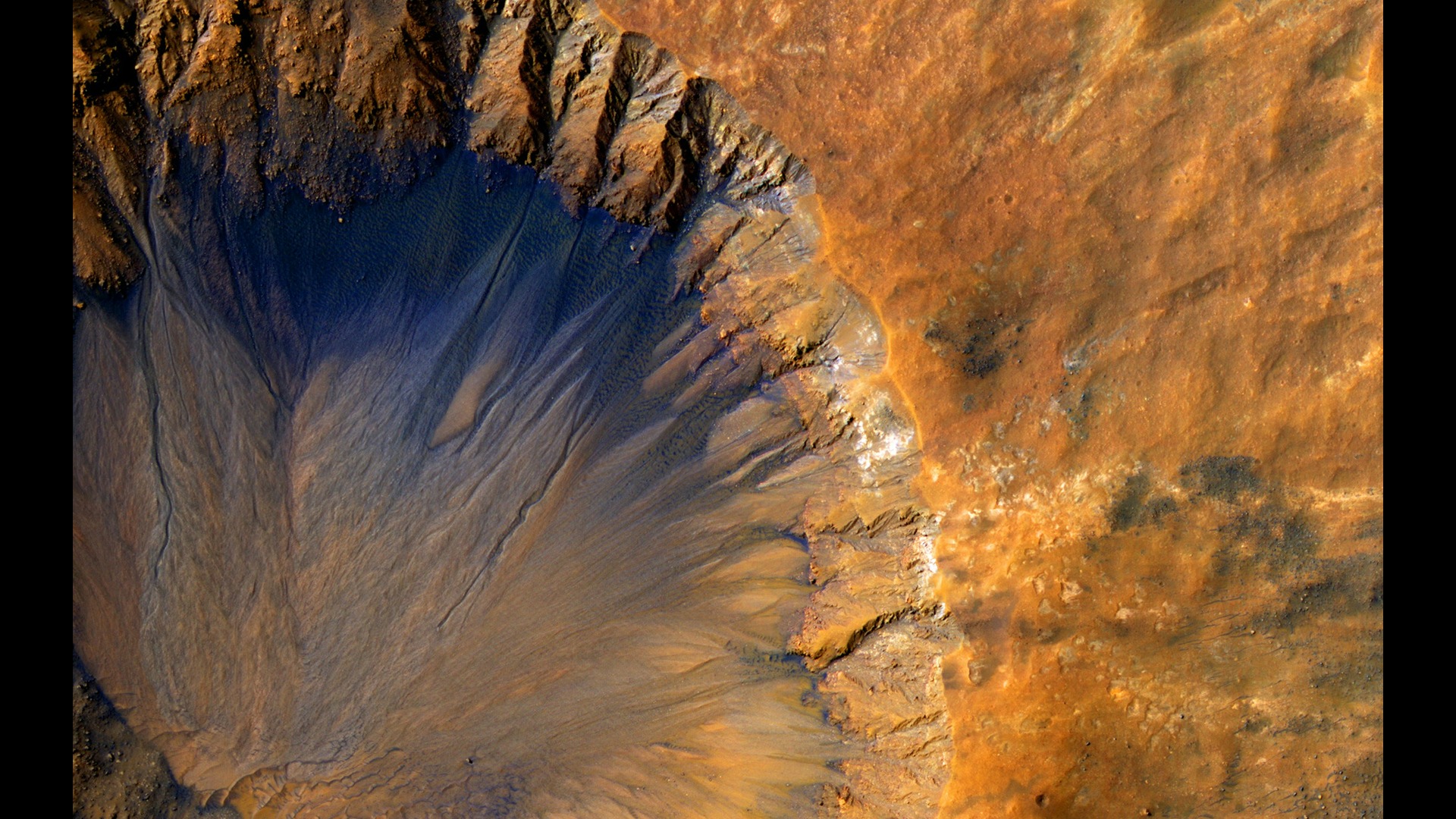
The Incredible Evolution of Rocket Launch Technology
September 19, 2024 - Emily Newton
Revolutionized is reader-supported. When you buy through links on our site, we may earn an affiliate commission. Learn more here.
Rockets have been shaping history for centuries, from Chinese firecrackers to the reusable rockets that could take humans to Mars. Rocket launch technology has evolved dramatically over the years, with more thrilling innovations on the horizon.
The first big leap in rocket launch technology was from solid fuel to liquid fuel. The second big leap was multi-stage launch methods that used both liquid and solid fuel. Next came the invention of reusable rockets that could be launched numerous times. In the future, rocket launch technology may take some exciting new shapes to propel humans deep into the solar system.
The evolution of rocket launch tech is proof of just how far aerospace engineering has come. Understanding rocketry’s past unveils hints about where it is headed to next.
Gunpowder and Solid Fuel
The earliest form of rocket launch technology was developed in China around 1100 AD. Soldiers fitted arrows with gunpowder then launched them from bows. The solid propellant ignited in a loud, sparking flash that alarmed and scattered enemies in battle. Later in this period, the Chinese invented larger rockets launched from wooden racks.
The word rocket originated from these ancient weapons, rooted in the Chinese word for “fire arrow”. The flight controls of these rockets consisted of the feather fletching on the arrow. Interestingly, modern rockets still feature an arrow-like shaping, complete with fletching.
For hundreds of years, scientists all over the world tried their hand at evolving China’s “fire arrows”. The technology itself experienced little innovation, though. Solid propellants were used to fire rockets for warfare as well as entertainment. All of this changed in 1926.
Liquid-Fueled Rocket Launches
For centuries, gunpowder and other solid propellants were the only way to launch a rocket. Solid propellants were fine for launching rockets over short distances, such as a battlefield or up into the sky for a fireworks display. In order for dreams of space exploration to become reality, though, rocket launch technology would need to evolve.
Goddard Changes History
On March 16, 1926 in Auburn, Massachusetts, a young scientist named Robert Goddard did something that few thought possible. He launched the first ever liquid-fueled rocket. This new rocket launch technology used a combination of oxygen and gasoline. This propellant was channeled through the rocket’s skeleton of metal pipes. Goddard realized that liquid fuel would provide more energy with less mass and produce greater acceleration than solid propellants could. His theory was right.
Goddard’s rocket maxed out at 60 miles per hour, which was far faster than the average solid-fuel rocket of that time. This proved that liquid-propelled rocket launches were not only possible, but the future. Today, Robert Goddard is considered the father of modern rocketry. By the time of his death in 1945, Goddard held over 200 patents in rocketry and broke six altitude records. Every individual in the sector uses this foundational knowledge to power modern technologies.
The WWII Turning Point
In 1942, against the backdrop of World War II, one invention changed the course of history: the V2 rocket. A team of German scientists led by the famed Wernher von Braun designed the V2 as a weapon for the Nazi military. The Germans launched thousands of these rockets during WWII, devastating targets across Europe, including Paris, Belgium, and Great Britain.
Despite the V2’s deadly purpose, it is considered the rocket that “launched the space age”. The V2 had a range and payload capacity unlike anything ever seen before. It could travel up to 50 miles (80 kilometers) above the Earth’s surface and is considered the first true space rocket.
The V2 stood approximately four stories tall, propelled by a combination of oxygen and ethanol. It took advantage of one of the revolutionary benefits of liquid fuel: control. Liquid propulsion allows the rocket’s trajectory to be adjusted in flight, unlike solid propellants. With the V2’s automated onboard guidance computer, this propulsion system allowed a rocket to be launched from anywhere to reach any destination.
Multi-Stage Launches and the Return to Solid Fuel
After the Allies emerged victorious from WWII, the US and the Soviet Union recruited many of Germany’s famed rocket scientists. Among these were Wernher von Braun and Sergei Korolev, both of whom worked on the V2 rocket. Korolev went to the Soviet Union while von Braun helped found the American space program.
The Apollo Launch System
One of the main challenges rocketry has faced throughout history is mass. The heavier an object is, the more mass it requires to launch, but the fuel itself adds yet more mass to the rocket. To solve this problem, NASA developed multi-stage, liquid-propelled rockets. This launch technology is the reason the Moon missions were possible.
The Saturn V rocket launched the Apollo missions. This three-stage rocket used three different liquid fuel configurations and each stage’s fuel tank was expendable. This allowed the rocket to lose mass over time, making it more efficient as its altitude increased. The first stage used five F-1 engines, which remain the most powerful single-nozzle liquid-fueled rocket engines ever invented.
The F-1 used a liquid combination of oxygen and kerosene. Above the F-1 engines was the second stage, containing five J-2 engines, which used hydrogen and oxygen. Finally, the third stage, containing a single J-2 engine jettisoned itself from the second stage using liquid hydrogen and liquid oxygen.
The Rise and Fall of the Space Shuttle
After the Apollo missions, NASA transitioned to a new rocket launch system: the space shuttle. While it never got to the Moon, the space shuttle remains a crucial part of aerospace evolution, forming a bridge between the launch technology of the 60s and that of today.
Unlike most of the rockets developed during the 20th century, the space shuttle used solid-fueled engines for its two boosters. The orbiter’s three main engines were liquid-fueled. NASA chose to use solid-fueled engines because they are safer, less complex, and less expensive. However, after the 1986 Challenger disaster, NASA invested $300 million to redesign the solid rocket boosters (SRBs) to improve safety and stability.
The two SRBs provided most of the space shuttle’s liftoff thrust. After that, a tank of liquid fuel fed the three main engines for the remainder of the rocket launch. Despite two horrific accidents, the space shuttle was an important step forward in rocket launch technology. It set the stage for 21st century rocketry with its reusable boosters and orbiter.
Modern Spaceflight: Reusable Rockets
Today, private spaceflight companies are driving innovation in rocket launch technology, led by US-based SpaceX. Founded by Elon Musk, SpaceX changed the aerospace industry forever by inventing the world’s first orbital class reusable rocket. After launching, SpaceX’s boosters autonomously return to landing pads. From there, they are retrieved and refueled for another flight.
SpaceX made rocket launch history on December 21, 2015 when they successfully landed one of their Falcon 9 boosters during an orbital launch. The Falcon 9 has become the primary orbital rocket used by NASA. It even carries astronauts to the International Space Station onboard the Dragon capsule. The first stage of the Falcon 9 uses a cluster of nine Merlin engines, fueled by liquid oxygen and rocket-grade kerosene. The second stage, which launches the payload to orbit, uses a single Merlin Vacuum Engine.
Reusable rockets are crucial to the future of spaceflight. Launches are far less expensive and wasteful when the most expensive parts of a rocket can be reused. This makes payloads more accessible and opens the doors of space to more people.
Aiming for Mars
Despite many failures early on, SpaceX has mastered its reusable launch technology. On a larger scale, the spaceflight company has plans to create a reusable rocket capable of launching human crews to the Moon and Mars. SpaceX’s next-gen reusable launch system, “the Starship”, will be the most powerful launch vehicle ever developed.
SpaceX is testing prototypes of the Starship using SpaceX’s methane-fueled Raptor engines. This is a key feature to note since methane can be a renewable fuel, created by capturing methane naturally rather than letting it accumulate in the atmosphere. Methane also offers cost and performance benefits over other liquid fuels, leading other private spaceflight companies to adopt it, as well. When the Starship is fully operational, SpaceX plans to fly each one up to 1,000 times.
Solar Sails
In April 2024, Rocket Lab launched a revolutionary technology into space — a 30-foot solar sails on each side. It’s called the Advanced Composite Solar Sail System (ACS3), and this launch contained an observation satellite. When the solar sail extends, it looks like a diamond-shaped tarp.
The innovation is a new addition to rocket launch equipment. It takes the same idea as a boat sail and installs it on a rocket. Solar winds push against the solar sails to move the spacecraft along its path. It is a zero-fuel method, which could severely cut costs in propulsion. It also makes space exploration and satellite deployment more eco-friendly, cutting emissions required from the rocket industry.
This isn’t the first time a solar sail has hit space, but this version uses a new deployment method. Rocket scientists want the sails to be compressed and folded on Earth but managed to unfold with rigidity in space. They also want the sail to become fully operational in under 25 minutes. To do this, designers crafted an ultra-thin material they claim was not possible a decade ago — showing how fast rocket launch tech advances.
Orbital Maneuvering
Rockets use orbital maneuvering systems (OMSs) to change where they go by altering velocity. Then, it changes direction. NASA has published documents from 1985, showing how configurations have changed over the years. This technology has advanced significantly in recent years, though continued enhancements could prove contentious.
As ballistic missiles get better, they reveal the intersection between rocket launch technology progress and societal impacts. Dissecting this evolution is equally as critical as knowing the machinery and effectiveness of the rockets in space.
A recent launch from Iran demonstrated advancements in OMSs. This is promising for future rocket launches, but it might have cultural implications. Because the components required for this satellite launch has the potential to be used for nuclear weaponry, it could be a violation of a U.N. Security Council resolution because of geopolitical tensions in the region. In the past, previous regimes have held back on investing in space work during times of warfare and international stress because of what it could signal to nearby areas.
Many other advanced OMS projects have taken flight. Project Kuiper, fronted by Amazon, electrifies OMSs. The initiative strives to catalyze conversations about safe, responsible low Earth orbit spacecraft movement with a sustainable lean. The prototypes were effective, and operators had full agency over their movements. This is critical because without this type of propulsion system, the Earth’s orbit would drag satellites lower over time, causing concerns with deorbiting. New OMSs fight against these natural forces that would pull satellites down to dangerous territory.
The Future of Rocket Launches
Rocket launch technology has come a long way since Robert Goddard set modern spaceflight in motion. As cutting-edge spaceflight companies like SpaceX lead the way to space, many are wondering what rocket technology is on the horizon.
In 2021, the first all-civilian crew launched to orbit on SpaceX’s Dragon capsule. Within the next ten years, a civilian crew could orbit the Moon. Within the next twenty years, it is likely that humans could finally walk on Mars.
These advancements are possible because of the long evolution of rocket launch systems over the centuries. Down the road, the world might see nuclear propulsion and even light propulsion launch humanity to the stars.
Editor’s note: This article was originally published on May 5, 2022 and was updated September 19, 2024 to provide readers with more updated information.
Revolutionized is reader-supported. When you buy through links on our site, we may earn an affiliate commission. Learn more here.
Author
Emily Newton
Emily Newton is a technology and industrial journalist and the Editor in Chief of Revolutionized. She manages the sites publishing schedule, SEO optimization and content strategy. Emily enjoys writing and researching articles about how technology is changing every industry. When she isn't working, Emily enjoys playing video games or curling up with a good book.








Beautiful picture. Can you tell me if it is an artist’s illustration or real? If real, launched from where? Thanks so much!!
hellped so much